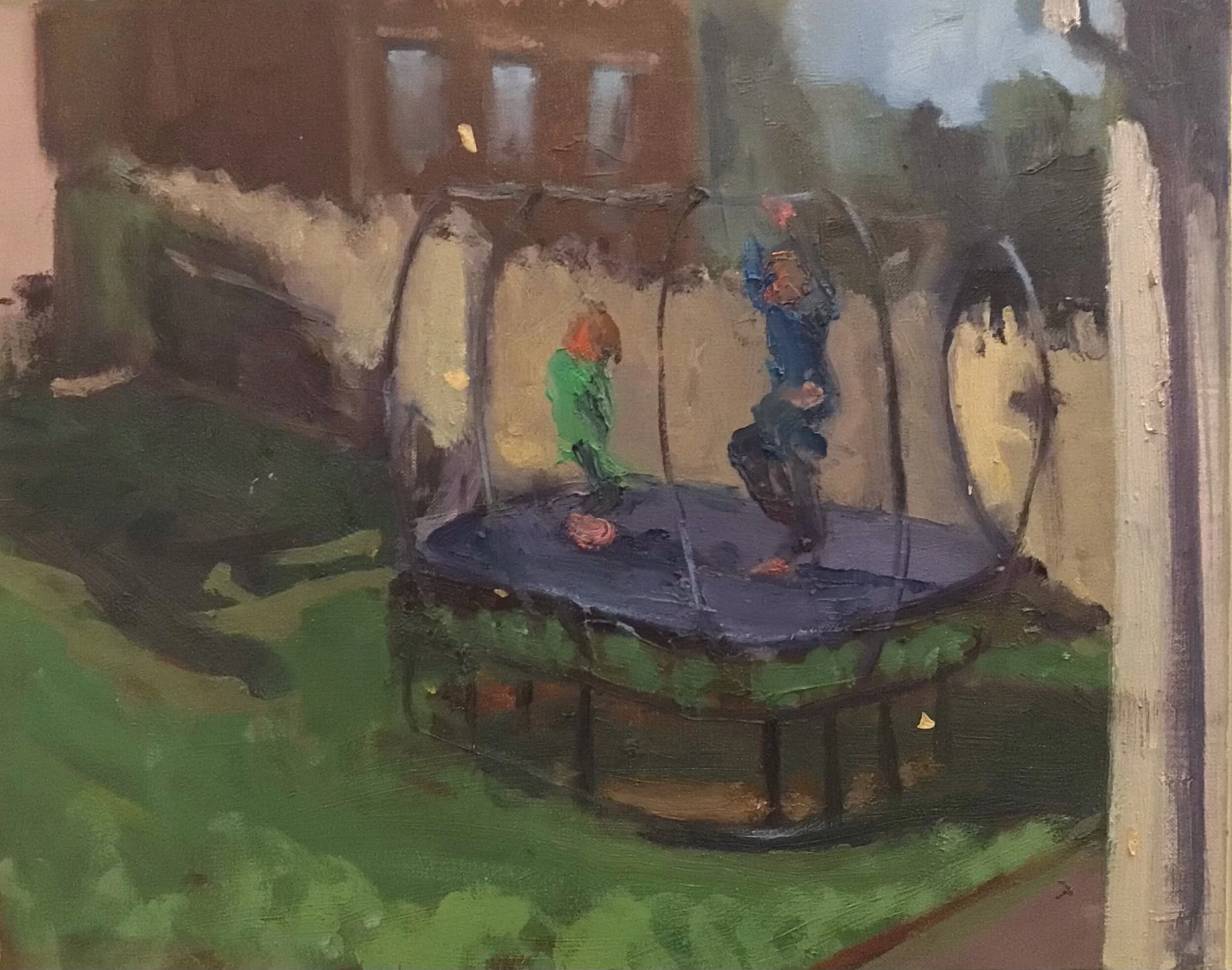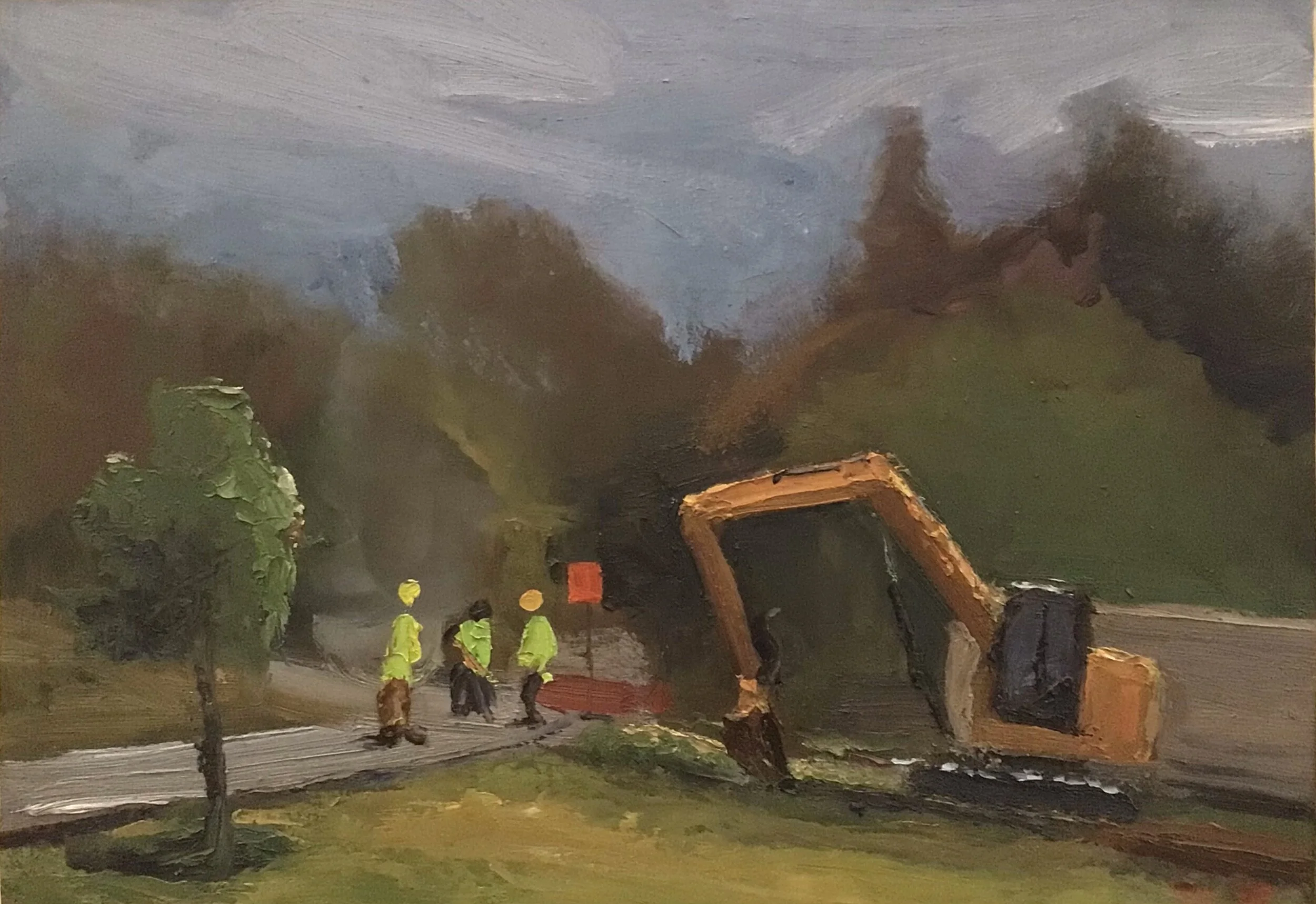Aaron Lubrick : Painter
As an Artist whose practice is embedded in the traditions of landscape painting, my work is a part of a long history of narratives that support contemporary dialogue around the representation of land and identity. However, an empirical approach to painting means that I am confronted with a paradoxical understanding of environmental concerns where I look and see beauty and inspiration but hold the knowledge of violence of our land outside of that view. The continuous development of my work confronts elements of nostalgia, memory, and beauty as I experience a landscape in peace or under threat.
My work examines the evolution of the landscape as a malleable metaphor and the influence of painters such as George Wesley Bellows with his bold, heavy, and dirty brush marks rooted in an “American Ashcan” aesthetic continues to inform and inspire my own relationship to the material nature of painterly expression. I paint with a large loaded brush, and debris, trash, human remnants and detritus are organic elements that fill the foreground of my works while I simultaneously strive to create a sense of atmospheric space. I am interested in paintings and drawings that explore our very human relationship with nature in a contemporary context, and my paintings usually have a prehistoric look with vague forms and simplified shapes yet they remain contemporary with their heavy paint texture, color choices, and occasional collage elements.
My artistic practice is largely observational as I investigate how we, as humans, relate to nature but yet remain committed to ravaging our landscapes and oceans. In observation of how we engage with our earth and its flora and fauna, my work often
reflects the greediness of corporate actions within the scope of the constantly renewed and healing earth.
Atmospheric perspective is one of the key elements to my paintings and I work towards developing this in my practice by creating an image where the viewer can experience space and distance in an organic colorful setting even within the constraints of a small surface. I try to understand how to create this space by taking the time to stand near a large open landscape, such as at the edge of a large body of water or a freshly cleared field, and then through observation allow that incredible primal and freeing sensation to manifest. I’m interested in investigating and creating this effect in my paintings and to also capture that experience of wonderment and astonishment. A cut down tree across the picture plane or a bright, fluorescent colored piece of trash can fill the foreground of one of my paintings which asks the viewer to step closer and experience uncertainty and surprise
In addition to the land, the human form adds to this beautiful equation. For example, the curves of the nude female form or the gesture of the muscular male are striking against a vast open field. I feel strongly that humans can relate to the stride or the way a person is sitting, for posture and how weight is carried often reflects some internal dialogue of the figure and of ourselves.







Oil on Panel
11.5 x 8.5